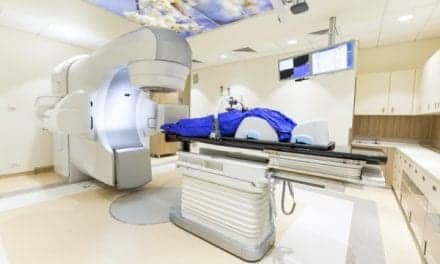By Aine Cryts
Creating a patient-centric healthcare system requires just the right mix of high-tech and high-touch approaches, says Greg Flanagan, chief information officer (CIO) at Allentown, Penn.-based Coordinated Health.
Coordinated Health has seen some early success with its patient portal—10 percent of its patients are currently registered—and efforts to allow patients to schedule appointments online are also underway. One of the health system’s successful high-tech/high-touch initiatives is its 24/7 call center, where staff members have access to Coordinated Health’s systems and can respond to patients’ questions.
AXIS recently spoke with Flanagan about achieving the right mix of high-tech and high-touch approaches to creating a better patient experience.
AXIS: Tell me about the patient experience you’re trying to create at Coordinated Health. How are you using technology to help achieve that?
Flanagan: A lot of our patient engagement is done from a high-touch perspective where we leverage our solutions center, a call center that’s staffed 24/7, to improve the patient experience. This is really important from a patient perspective because if they have a question for their doctor or about a prescription or want to schedule an appointment, our call center staff is available 24/7. Someone is going to answer the patient’s call, without a lot of wait either.
The “secret sauce” that makes much of this work is our customer service representatives have access to all of our systems. They can pretty much handle everything the patient needs.
AXIS: Tell me about your efforts to introduce online scheduling for your patients.
Flanagan: A great example of an administrative process that can be brought to the web is online scheduling. We’re beginning the process of implementing an online scheduling tool so that patients will be able to see physicians’ availability online and book an appointment. That doesn’t sound like a big deal, but not many provider organizations offer that—and we think that will be a neat patient engagement thing. Our patients won’t have to call to make appointments, and they’ll be able to do it on their own time.
There are a lot of complexities around scheduling appointments. It’s not like going for an oil change. Sometimes, patients are going to see a provider for something complex. In order to schedule a provider at the right time for the right amount of time and to book certain rooms—especially for a more complicated intervention—that makes for a more nuanced appointment scheduling process. Coordinated Health has not released the launch date for online scheduling.
AXIS: What’s your patient portal strategy?
Flanagan: We’re like every other provider organization, in that Meaningful Use is really important to us. We implemented a patient portal in June 2014, and we have about 7,000 patients registered thus far. That’s 10 percent of our total patient population, but it’s a step in the right direction.
Our patient portal is helpful to our patients for a few reasons. One thing is our patient portal lets patients communicate by e-mail with their providers. Patients can also use it to see their test results and to request prescription refills.
One thing on my “unresolved issues” list is figuring out how to fix the situation where patients have multiple patient portals. In our particular area, which is Lehigh Valley in Pennsylvania, patients are going to have a patient portal at Coordinated Health and one at Lehigh Valley Hospital and one at St. Luke’s University Hospital. That’s not a great patient experience. The software vendors are starting to play differently from an interoperability standpoint in terms of exchanging clinical information, but I still think there are years of work ahead to make that an effective process.
AXIS: How are your high-tech and high-touch approaches changing how your providers practice medicine?
Flanagan: I think our physicians are a little split on this. For many of our surgeons, they view the world a little differently than our primary care physicians. The primary care physicians really have an interest in engaging with their patients for the longer term, whereas the surgeons are typically episodic with their view. Now, that’s not black and white. Let’s tease that apart.
From the primary care perspective, we want to try to provide a more holistic picture of our patients. Because of that, there’s a need to have better clinical support tools and registries and tools that are driving the clinical thought process and decision-making—and that impacts how providers are interacting with their patients. Coordinated Health is very patient centric. We try to be open for business 24/7. We’ve got this care-on-demand solution, which is urgent care. If you need us, we’re here for you.
###
About Greg Flanagan
Greg Flanagan is CIO at Coordinated Health, a specialized hospital network that delivers care in orthopedics, women’s health, primary care, and employer services.
He joined Coordinated Health from Advancing Practitioners, a Brentwood, Tenn.-based health services company where he served as chief operating officer. Flanagan has also served as CIO of White Plains, N.Y.-based APS Healthcare and Brentwood, Tenn.-based RegionalCare Hospital Partners.
Flanagan holds a master’s degree in hospital administration from Duke University.








Coordinated Health has the least ADA compliant building I have seen for healthcare. Previously, I considered filing a complaint about the doors. In addition the ramp is very steep for a walker or wheelchair. Also, I had to yell for assistance when using the ladies room on the second floor. My longtime doctor was let go not “retired”. Today, I reached the end. I really like Dr Diep Nguyen but I had to cancel when I got a call that the elevator was not working. This is not quality care!!